
Alajuela is a province of Costa Rica. It is located in the north-central part of the country, bordering Nicaragua to the north. It also borders the provinces of Heredia to the east, San José to the south, Puntarenas to the southwest and Guanacaste to the west. As of 2011, the province had a population of 885,571. Alajuela is composed of 16 cantons, which are divided into 111 districts. It covers an area of 9,757.53 square kilometers.
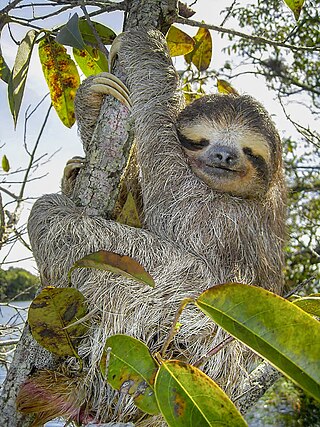
The three-toed or three-fingered sloths are arboreal neotropical mammals. They are the only members of the genus Bradypus and the family Bradypodidae. The five living species of three-toed sloths are the brown-throated sloth, the maned sloth, the pale-throated sloth, the southern maned sloth, and the pygmy three-toed sloth. In complete contrast to past morphological studies, which tended to place Bradypus as the sister group to all other folivorans, molecular studies place them nested within the sloth superfamily Megatherioidea, making them the only surviving members of that radiation.
Same-sex marriage has been legal in Costa Rica since May 26, 2020 as a result of a ruling by the Supreme Court of Justice. Costa Rica was the first country in Central America to recognize and perform same-sex marriages, the third in North America after Canada and the United States, and the 28th to do so worldwide.
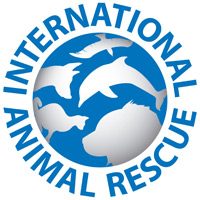
International Animal Rescue (IAR) is an animal protection and conservation non-profit organisation that comes to the aid of suffering animals with hands-on rescue and rehabilitation and the protection of wildlife habitats. IAR returns rehabilitated animals to the wild while also providing permanent sanctuary for those that cannot fend for themselves. Its work includes cutting free and caring for captive bears in India and Armenia, rescuing and rehabilitating orangutans and other primates in Indonesia and treating injured and orphaned howler monkeys in Costa Rica. IAR strives to educate the public in the humane treatment of all animals and the preservation of the natural environment. International Animal Rescue has offices in the United Kingdom, United States, [[India]
The Jaguar Rescue Center is an animal rescue center located near Puerto Viejo de Talamanca in the Limón Province of Costa Rica. The center is dedicated to the rehabilitation of mistreated, injured, orphaned, and/or confiscated animals. Once the animals are fully rehabilitated, they are reintroduced into their natural habitats in protected areas within Costa Rica, usually after a period in La Ceiba primary forest. Visitors are permitted in the center during certain times each day. The center was founded by the Italian biologist Sandro Alviani and his wife Encar García, a Catalan biologist, who runs it with help of volunteers from all around the world and hosts numerous mammals, birds, reptiles, and amphibians. The center also houses a large serpentarium of venomous and nonvenomous snakes native to Costa Rica.

Jairo Mora Sandoval was a Costa Rican environmentalist who was murdered while attempting to protect leatherback turtle nests. Just before midnight on May 30, 2013, Mora and four female volunteers were abducted by a group of masked men. The women eventually escaped and informed the police. Mora's bound and beaten body was found on the beach the next morning. An autopsy determined he died by asphyxiation after suffering a blow to the head.

General elections were held in Costa Rica on Sunday, 2 February 2014 to elect a new president, two vice presidents, and 57 Legislative Assembly lawmakers. In accordance with Article 132 of the constitution, incumbent President Laura Chinchilla Miranda was ineligible to run for a second consecutive term.

Rescate Wildlife Rescue Center, formerly Rescate Animal Zoo Ave, is an urban park of approximately 14 hectares, located in La Garita, in the canton of Alajuela, Costa Rica. It has an average altitude of 814 meters and is bounded to the north by the bed of the river Rio Poas. The site includes the largest collection of bird species in Latin America.
Parque Nacional Simón Bolívar is an urban park of approximately 14 hectares, located in downtown San José, Costa Rica. It is the oldest botanical garden and zoo in Costa Rica. The name pays homage to Latin American national founder Simón Bolívar. It is administered by a conservation nonprofit foundation called Fundazoo. All animals in the zoo are orphaned, injured or have been disabled and are nursed back to health in hopes of releasing them.
La Marina Wildlife Rescue Center, or La Marina Zoo is an animal rescue centre located 8.5 km northeast of Ciudad Quesada, between Palmera and Aguas Zarcas, in the Alajuela Province of Costa Rica. The centre is dedicated to the rehabilitation of mistreated, injured, orphaned, and/or confiscated animals. Once the animals are fully rehabilitated, they are reintroduced into their natural habitats in protected areas within Costa Rica, primarily in the Parque Nacional Juan Castro Blanco to the south of the centre.

Project Vibroana is a privately operated serpentarium, rescue centre and environmental education facility located near Turrialba Volcano in the Cartago Province of Costa Rica. The centre is dedicated to the rehabilitation of mistreated, injured, orphaned, and/or confiscated snakes, focusing primarily on venomous species. Once the animals are fully rehabilitated, they are reintroduced into their natural habitats in protected areas, mainly in the Pacuare River primary forest. Visitors are permitted in the centre during certain times each day. The center was created and is run by Minor Camacho, a Costa Rican herpetologist. The educational guide explores the natural history and habitat of poisonous snakes more than their taxonomy.
Below are listed all the matches played by the Costa Rica national football team between 2010 and 2019.

Hope for Wildlife (HFW) is a non-profit wildlife rehabilitation and education centre located on a farm in Seaforth, Halifax Nova Scotia, Canada. It was founded by Hope Swinimer in 1997 as The Eastern Shore Wildlife Rehabilitation and Rescue Centre. It got its current name in 2005. A television series, Hope for Wildlife, began documenting the centre's efforts in 2009.

The Sloth Institute Costa Rica is a small, not-for-profit organization based in Manuel Antonio, close to Manuel Antonio National Park, Costa Rica, dedicated to the rescue and rehabilitation of sloths. It often takes in orphaned or injured sloths, which require care. Through the work of the team, the sloths are rehabilitated and released back into the wild.
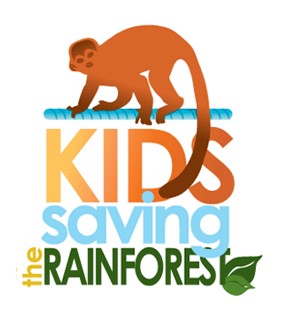
Kids Saving the Rainforest (KSTR) is a Costa Rica–based non-governmental non-profit 501(c)(3) organization founded in 1999 to plant trees in depleted areas of the country, and to rescue, rehabilitate and, when possible, release the animals who live in these forests. Since its inception, Kids Saving the Rainforest has planted or is in the process of planting nearly 100,000 trees and rescued and rehabilitated 3,000 wild animals, two-thirds of which have been released back into the wild.
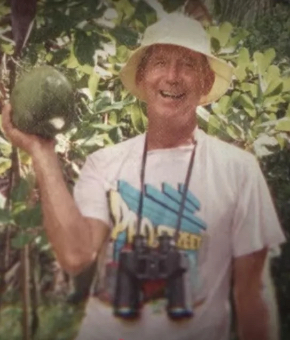
Jack Donald Lewis was an American missing person who disappeared on the morning of August 18, 1997, after leaving his home in Tampa, Florida. The investigation into his disappearance has stretched from Lewis's Wildlife on Easy Street sanctuary in Tampa, co-owned with his second wife Carole Baskin, to land owned by Lewis in Costa Rica. No evidence has surfaced that Lewis was the victim of a crime, but friends, family, and investigators believe it is unlikely that he disappeared by choice because he had been executing business plans that were left unfinished. Lewis left behind over US$5 million in assets. He was declared legally dead in 2002 on the fifth anniversary of his disappearance.
Jairo Mora Sandoval Gandoca-Manzanillo Mixed Wildlife Refuge, is a protected area in Costa Rica, managed under the Caribbean La Amistad Conservation Area, it was created in 1986 by decree. It protects both a land portion as well as a marine portion. In 2013 the refuge was renamed to honour the murdered environmentalist Jairo Mora Sandoval. In 2014 land along the coast containing a number of small towns was removed from the refuge, due to complaints from the local residents about evictions and destruction of property due to strict building codes. It is one of only two places in Costa Rica where manatees still occur. It is located in a coastal beach region, fronted by coral reefs and clothed in tropical forest, with 1950-3000mm yearly precipitation.
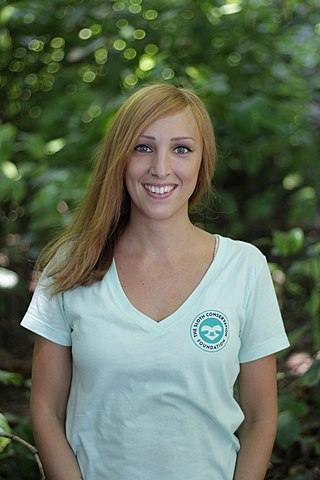
Rebecca Cliffe is a British zoologist, award winning conservationist, and one of the leading experts on sloth biology and ecology. She is the Founder and Executive Director of The Sloth Conservation Foundation and author of the book Sloths: Life in the Slow Lane.

TheSloth Conservation Foundation (SloCo) is a non-profit organisation based in Costa Rica that is dedicated to the protection of sloths living in wild and human-modified habitats through research, education and community-based conservation. SloCo was founded in 2017 by sloth researcher Dr. Rebecca Cliffe.













